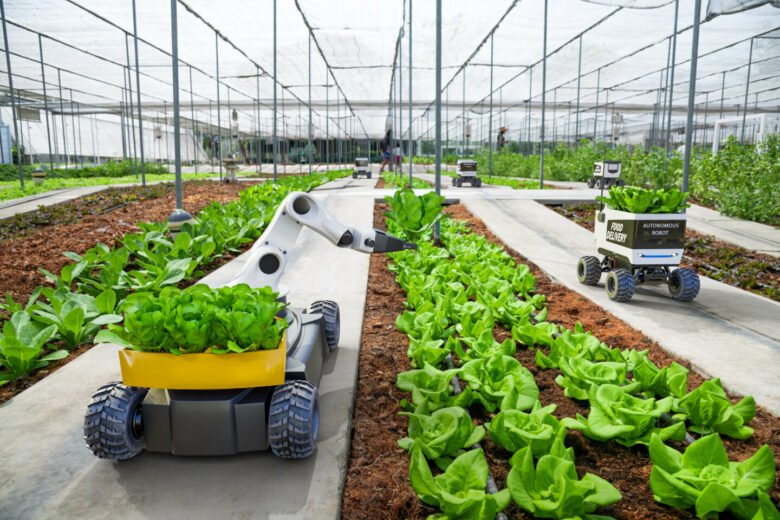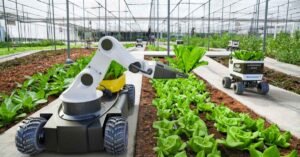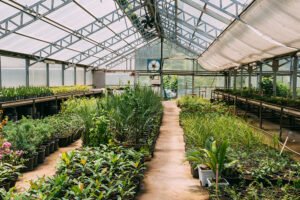Sustainable agricultural technologies have become an important way to solve the problems caused by traditional farming methods, which often damage the environment, deplete resources, and wipe out species. As the world’s population continues to grow, so does the demand for food, putting enormous pressure on agriculture. As a result, new technologies are constantly being created and used to make agriculture more stable and sustainable. This article discusses key developments in sustainable agricultural technologies and how they can help protect the environment, better use resources, and increase productivity.
1. Precision Farming:
Precision agriculture, also called precision farming or precision farming, uses technology to maximize crop utilization while minimizing waste. This approach uses sensors, GPS technology, and data analytics to accurately monitor things like watering, fertilizing, and pest eradication. By focusing on and analyzing real-time data, farmers can make better choices, use resources more wisely, and reduce their impact on the environment. Precision agriculture not only makes better use of resources but also increases overall crop yield.
2. Smart Watering System:
Water scarcity is becoming an increasing problem in agricultural land, and old methods of irrigating crops often waste water. Smart irrigation systems use monitoring technology to monitor the weather and the amount of water in the soil. This allows them to water plants accurately and automatically. These systems deliver water only where and when it is needed, which preserves water supply, reduces energy consumption, and prevents over-irrigation, which damages soil and washes away nutrients.
3. Agriculture in Wetlands:
Agroforestry adds trees and shrubs to standard agricultural land, making it a more environmentally friendly way to use land. Trees have many benefits, such as making the land more fertile, preventing erosion, and storing carbon. Agroforestry practices can help keep the environment healthy in the long term, increase biodiversity, and create microclimates conducive to crop growth. Additionally, these methods often provide farmers with multiple ways to make money, making the economy more resilient.
4. Controlled Environmental Agriculture and Vertical Farming:
More people moving to cities means more people want fresh food nearby. This need can be met through vertical farming and controlled environment agriculture (CEA), where plants are grown in controlled indoor environments or vertically stacked layers. These systems use advanced technologies such as hydroponics, aeroponics, and LED lighting to create optimal conditions for growth. Vertical farming reduces the need for large areas of agricultural land, lowers transportation costs, and makes better use of resources such as water and nutrients.
5. Pest Control Based on Biology and Precision:
Chemical pesticides are often used in traditional ways to eliminate pests, but they can be harmful to the environment and human health. Natural enemies, parasites, and pathogens are used in biological pest control in sustainable agriculture to control pest populations. Precision control also uses a data-driven approach to identify and target specific pest threats, meaning fewer pesticides are typically used. These actions help protect various species of plants and animals, keep beneficial bacteria safe, and reduce the amount of residual chemicals in food.
6. Integration of Renewable Energy:
When renewable energy sources are used in agriculture, they help reduce the need for fossil fuels and reduce greenhouse gas emissions. Biomass energy systems, solar panels, and windmills can all be used to power agricultural machinery, irrigation systems, and processing plants. By using green energy, farmers can help make energy systems more sustainable while reducing their own costs and carbon footprint.
7. Blockchain and Supply Chain Transparency:
Blockchain technology is transforming the food supply chain by making information clear and easy to trace from farm to fork. This new idea helps hold people accountable and reduces theft in the food supply chain. People have access to a wealth of information about where the items they buy come from, how they are made, and how good they are. Blockchain technology encourages safe farming and ethical production methods by making businesses more open.
Conclusion
Cutting-edge technologies of sustainable agriculture are being used to solve the toughest problems in the world’s food systems. The improvements discussed in this article illustrate a shift toward approaches that prioritize long-term resilience, resource efficiency, and environmental protection. As agriculture changes, implementing these technologies is important to create a greener, more sustainable future for generations to come.
FAQs
1. What is healthy agricultural technology?
When farmers use new agricultural tools, methods, and systems to solve the environmental, social, and economic problems caused by traditional farming methods, this is called sustainable agricultural technology. These technologies prioritize long-term resilience, resource efficiency, and environmental protection.
2. How does precision agriculture make agriculture more environmentally friendly?
Precision agriculture uses sensors, GPS technology, and data analytics to improve agricultural tasks such as watering, fertilizing, and eradicating pests. By carefully managing these factors, farmers can reduce resource use, protect the environment, and increase crop yields.
3. What is a smart watering system? How do they help farmers?
Smart irrigation systems use sensor technology to monitor the weather and the amount of water in the soil, allowing them to provide accurate, automated irrigation. These methods support long-term water management in agriculture by helping to conserve water resources, reduce energy consumption, and prevent over-irrigation.
4. What role does agroforestry play in making agriculture more sustainable?
Agroforestry adds trees and shrubs to areas typically used for agriculture. Trees have many benefits, such as making the land more fertile, preventing erosion, and storing carbon. Agroforestry methods help the environment stay healthy in the long term by increasing biodiversity and creating a good microclimate.
5. What is vertical farming? How does it help the environment?
Vertical farming refers to growing plants in a controlled indoor environment or vertically stacked layers. This technology and Controlled Environment Agriculture (CEA) use advanced technologies such as hydroponics and LED lighting to create optimal conditions for plant growth. Vertical farming makes better use of resources, uses less land, and reduces transportation costs.
6. How can biological pest control help agriculture become more sustainable?
Instead of using chemical pesticides, biological pest control uses natural enemies, parasites, and pathogens to control pest populations. This helps protect biodiversity, keeps beneficial insects safe, and reduces environmental damage caused by standard pest control methods.



